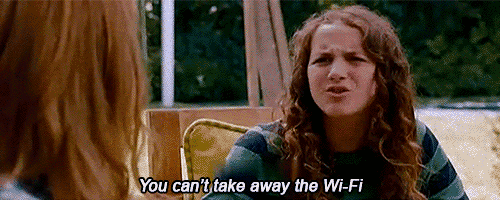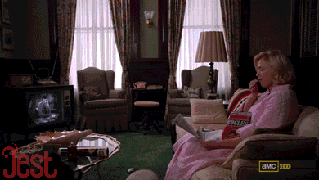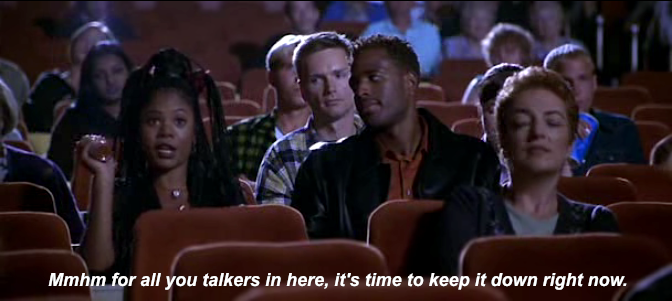Apparently, I was in a minority when I was studying year 12.
The year was 2011, and I still lived at home with my mum. I was doing my HSC – without any internet access (I still have nightmares to this day). We technically lived in ‘the country’, but I refuse to blame my rural city of 30,000 people for my mother’s refusal to sign us up to a service provider.
We had the internet the year before, but we moved house in the first few months of 2011, and mum didn’t feel the need to reconnect it at the new house. It cost too much money, and she was sick of telling me to go to bed when she wandered into the lounge room in the early hours of the morning, while I was still wide awake and scrolling through some website or another.
At the time, 79% of Australian households had an internet connection in 2011, so we were in the minority (ABS 2014). And I hated it.

But it has been years, and I now have an internet connection to call my own. I recently called my mum to talk to her about her views on the internet. She still doesn’t have it in her home, which means she remains in the minority. Here is what she told me.
1. Television is still a massive spatial component in her home
Because she doesn’t have the internet connected, my mother’s house still revolves around the television. The lounge room in her home has the TV in the centre, and the couch is facing it. There is no dining room, and she has a tray she sits her meals on, while she watches TV and has dinner every night. There is a mattress on the ground directly in front of the TV, which she rests on after dinner, often falling asleep there – in front of the TV.

She doesn’t feel the need to have the internet because she has everything she needs – entertainment wise – with the TV. She isn’t networked in the same way that I am, and she doesn’t understand why people need the internet. But she does need her TV, and she considers it to be the heart of her home.
This reliance on media is summed up in ‘Consuming Technologies: Media and Information in Domestic Spaces‘, a book by Eric Hirsch, a professor of media studies, and Roger Silverstone, a social anthropologist and researcher:
“Why do communication and information technologies pose especial problems? One simple answer is, of course, that these technologies are not just objects: they are media. And it is their status as media which distinguishes them relatively, if not absolutely, from other objects such as plants or pictures, and other technologies such as refrigerators or hair dryers or hammers.” (Hirsch & Silverstone 2003, p. 15)
What is being suggested above is that we put more emphasis and worth onto technologies like televisions and the internet because they are media – and therefore interactive. Of course we give more attention to a technology which engages with us in numerous ways and on many different levels.

I’d suggest that my mum has no spatial or emotional connection to the internet, unlike most people in my generation, because she hasn’t been exposed to it, and hasn’t had an opportunity to engage with it.
She hasn’t experienced the internet in this way because…
2. She doesn’t fit the ‘normal’ internet-having demographic
In her article ‘Available in Selected Metros Only: Rural Melancholy and the Promise of Online Connectivity‘, Melissa Gregg explores why people who live in rural areas (like my mother) aren’t the focus of the Australian government’s broadband plan. She notes that:
“the promise of online connectivity is packaged as part of a suburban lifestyle that presumes wealthy (note the number of computers), leisured, nuclear families with stereotypical gender interests.” (Gregg 2010, p. 160).
My mother is not suburban, definitely not wealthy, we were never a nuclear family, and she falls outside of stereotypical gender interests. Gregg continues:
“Telstra’s extensive market research clearly corresponds with publicly accessible studies conducted by government agencies that show the presence of school‐age children is the principal factor in determining household broadband adoption—followed by income, education, occupation and employment… they also build a case for asking why broadband would ever be relevant to older citizens, or the poor or unemployed.” (Gregg 2010, p. 160.)
My mother hasn’t had school aged children in over five years, and she is older (50 plus), and poor. Perhaps these are reasons she doesn’t have, want, or need an internet connection.
While the internet may be changing the home spaces and practices of most families across Australia, my mum and her house are (for the time being) still stuck centred around the television.
REFERENCES:
Australian Bureau of Statistics 2014, Household Use of Information Technology 2012-13, cat. no.8146.0, viewed 10 September 2016, <http://www.abs.gov.au/ausstats/abs@.nsf/Lookup/D0DD505F12749281CA257C89000E3F5E?opendocument>.
Gregg, M 2010, ‘Available in Selected Metros Only Rural Melancholy and the Promise of Online Connectivity’, Cultural Studies Review, vol 16, no 1, pp. 155 – 169,<https://moodle.uowplatform.edu.au/pluginfile.php/690737/mod_resource/content/1/Gregg%20%282010%29%2C%20selected%20metros%20only.pdf>


